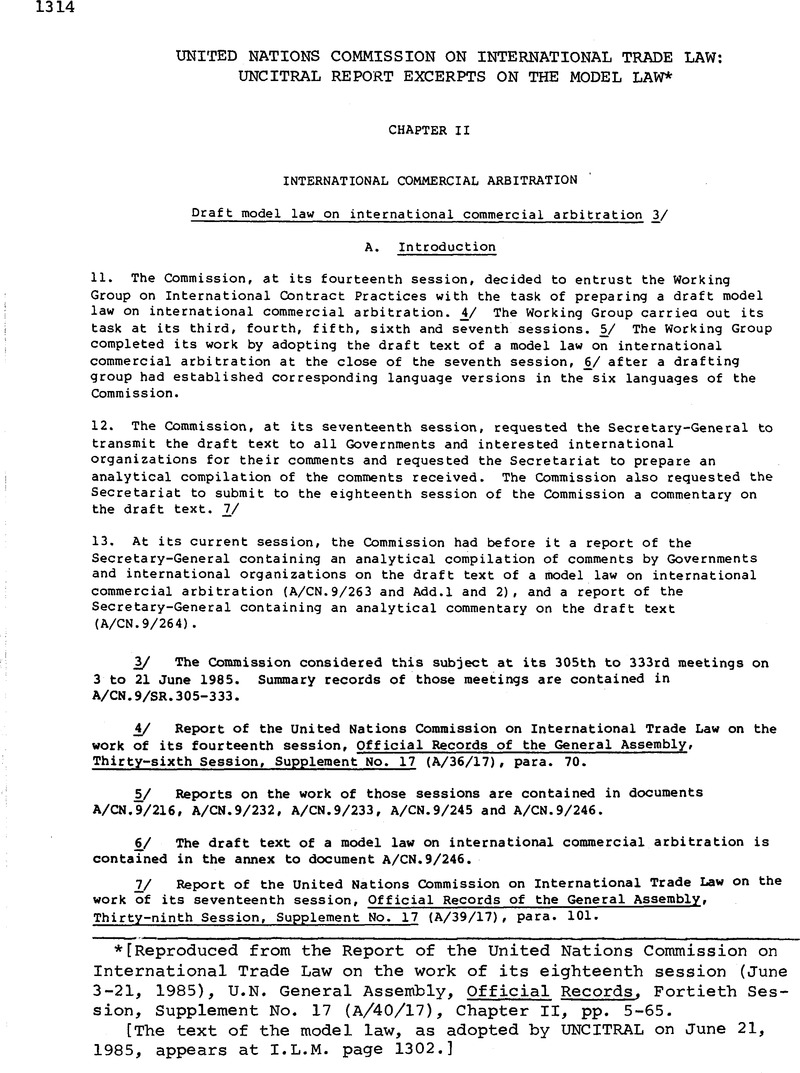No CrossRef data available.
Published online by Cambridge University Press: 20 March 2017

3/ The Commission considered this subject at its 305th to 333rd meetings on 3 to 21 June 1985. Summary records of those meetings are contained in A/CN.9/SR.305-333.
4/ Report of the United Nations Commission on International Trade Law on the work of i t s fourteenth session, Official Records of the General Assembly, Thirty-sixth Session, Supplement No. 17 (A/36/17), para. 70.
5/ Reports on the work of those sessions are contained in documents A/CN.9/216, A/CN.9/232, A/CN.9/233, A/CN.9/245 and A/CN.9/246.
6/ The draft text of a model law on international commercial arbitration is contained in the annex to document A/CN.9/246.
7/ Report of the United Nations Commission on International Trade Law on the work of i t s seventeenth session. Official Records of the General Assembly, Thirty-ninth Session, Supplement No. 17 (A/39/17), para. 101.
* [Reproduced from the Report of the United Nations Commission on InternationalTrade Law on the work of its eighteenth session (June 3-21, 1985), U.N. General Assembly, Official Records, Fortieth Session, Supplement No. 17 (A/40/17), Chapter I I , pp. 5-65.
[The text of the model law, as adopted by UNCITRAL on June 21, 1985, appears at I.L.M. page 1302.]
* Article headings are for reference purposes only and are not to be used for purposes of interpretation.
** “The term ‘commercial’ should be given a wide interpretation so as to cover matters arising from all relationships of a commercial nature. Relationships of a commercial nature include, but are not limited to, the following transactions: any trade transaction for the supply or exchange of goods; distribution agreement; commercial representation or agency; factoring; leasing; construction of works; consulting; engineering; licensing; investment; financing; banking; insurance; exploitation agreement or concession; joint venture and other forms of industrial or business co-operation; carriage of goods or passengers by air, sea, rail or road.”
* “The conditions set forth in this paragraph are intended to set maximum standards. It would, thus, not be contrary to the harmonization to be achieved by the model law if a State retained even less onerous conditions.”